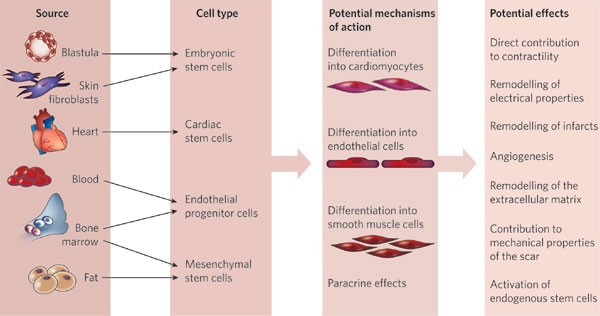Table of Contents
The writers keep in mind hurdles that remain, consisting of boosting the engraftment success and cell survival. Because the ISCI and Miller School are leaders in this field, the authors likewise stress the need to systematize interpretations and results steps in the area. "The Hare Laboratory stays at the forefront of pioneering new treatments in this critical clinical domain.
Now we are discovering exactly how to harness such stem cells to aid patients heal their own broken hearts."The research is guided by the Cedars-Sinai Heart Institute, with the cooperation of the Johns Hopkins College, where Dr. Marbn functioned prior to signing up with Cedars-Sinai in 2007. The 24 individuals taking part in the research have hearts that were harmed and marked by cardiovascular disease.

It takes about four weeks for the cells to multiply to numbers enough for therapeutic use, roughly 10 to 25 million. In the 3rd and final step, the now-multiplied stem cells are re-introduced right into the individual's coronary arteries throughout a 2nd catheter procedure. All clients in the research study had to have experienced cardiovascular disease within four weeks prior to signing up in the research study project.
Later on this summer, it is prepared for that 12 even more individuals will undertake procedures to receive 25 million stem cells, while 6 additional patients will be kept track of as controls. The first patient, Kenneth Milles, a 39-year-old controller for a tiny building and construction business in the San Fernando Valley, experienced a heart strike on May 10 as a result of a 99 percent obstruction in the left anterior coming down artery, a significant artery of the heart.
The process to grow the cardiac-derived stem cells involved in the study was created by Marbn when he got on the faculty of Johns Hopkins College. The university has filed for a patent on that particular intellectual building, and has accredited it to a business in which Dr. Marbn has a financial interest.

All financing was stemmed from the National Institutes of Health And Wellness, the Donald W. Reynolds Structure and Cedars-Sinai Medical Center. Marbn holds The Mark Siegel Family Structure Endowed Chair and Director of the Heart Institute.
Understanding stem cell therapy for Arrhythmias
Heart failing is an acute or persistent condition that affects numerous individuals worldwide. One of the most typically approved approaches of therapy generally consist of sign administration and medication taken for life, so the burden caused by the problem is hefty. Stem cell therapy for cardiac arrest has actually become a brand-new method to treat and take care of the core of the disease.
However, stem cell therapy can assist to alleviate signs and enhance the heart's pumping ability. This therapy uses the capacity of stem cells to self-regenerate and self-heal. Adhering to the admission of stem cell shots for coronary infarction, numerous devices enter into play: Stem cells for cardiac arrest promote the formation of specialized heart muscle cells and regrow damaged tissue, boosting the heart's pumping ability.
These are types of grown-up stem cells that are acquired from bone marrow, fat cells, and skin cells. These are the most usual and well-researched kinds of stem cells.
These are gotten from embryos and have the pluripotent possibility to change into any type of kind of cells, including cardiac ones. The main issue with these cells is that, as they are extracted from embryos, they have lots of moral and legal restrictions and are just utilized in details circumstances. for the reasons discussed over.
Can you manage Atherosclerosis with regenerative medicine?
These cells come from the heart and are appropriate to cardiac repair service. Please, call our clinical consultant to discuss your wellness problem with a professional in regenerative medicine. You can additionally leave your contact information for a callback. It is complimentary and confidential. Medical Consultant, Swiss Medica physician The application and treatment of stem cell therapy includes five steps: Patients begin with an on-line examination with our clinical expert and are then evaluated by a cardiologist, who will get the required medical background, do blood examinations, and request imaging research studies to establish whether stem cell treatment for heart failure is a viable alternative.
We carry out stem cells through pain-free stem cell shots for congestive heart failing. A very educated physician will certainly infuse refined stem cells into the blood stream; the entire procedure takes less than an hour. After completing the heart disease stem cell treatment procedures, our patients will certainly be kept an eye on for any difficulties and results.
Navigation
Latest Posts
Regenerative support for Atherosclerosis using stem cells
Overview of stem cell therapy for Atherosclerosis
Stem cell injections for Heart Disease now available